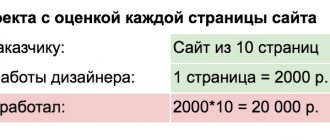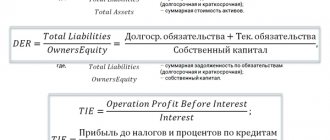The modern development of information and computing systems and analytical tools makes it possible, from an organizational and technical point of view, to carry out planning, analysis and control of almost any investment project and of any complexity. But this very progressive factor also has a flip side, which is not always positive.
First of all, the increasingly widespread use of mathematical models and software systems to model investment processes, to some extent makes the investor’s decision-making dependent on what “machine brains” give in the form of recommendations.
Secondly, even the most complex and super modern information processing system, even if built on the principles of a neural network or quantum processor, will not be able to take into account all the factors and risks associated with investments. This is due, in addition to purely technical, financial and other factors, to the fact that a person plays a big role in the market, with all his little predictable behavior and irrationality. Therefore, no “machine” is capable of taking into account such factors as, for example, “the bad mood of the owner of the bank - the creditor” or “a sudden surge of interest in risk among investors in the corporate bond market.”
Thirdly, the distance from the market or the barrier that is erected between the investor and the market in the form of “artificial intelligence” does not allow him, as they say, to “feel the market”, and making decisions only on the basis of even generally correct analytical indicators is unlikely will lead to real success.
This article will talk about the basic principles of investment analysis, what databases it should be based on, and what methods are used for this not only in theory, but also, most importantly, in practice.
Principles and methods for assessing the effectiveness of investment projects
Of all the currently existing models for assessing investment projects in the real and financial sectors of the economy, they are used in a wider format than was common in the recent past. The modern model is based on assessing the effectiveness of investments in several important areas, which can be conventionally presented in the form of several blocks of analysis, as shown in the diagram (Figure 1).
These main blocks of investment analysis are built not only on taking into account the commercial effectiveness of the project, but also its significance for society in the broad sense of this definition. Those. In addition to “money,” the assessment of a project includes the degree of its influence on society, everything that surrounds it, natural resources, ecology, etc.
To be more specific, these principles for evaluating investment projects can be expressed through a system of indicators that are taken into account both in the early stages of project planning and during its immediate implementation.
These are, first of all, the following factors or basic principles for evaluating investment projects:
- The principle of scientific and technical effect is based on novelty, usefulness, aesthetics, compactness and other characteristics. The main purpose is the development of various industries, science and technology.
- The principle of social effect is measured through the benefit of the project for the population . Depending on the scope of the project and its breadth, consideration may include the population either living in close proximity to the investment site or working on the project, i.e., implementing it. The manifestation of this effect can occur through the following categories:
- positive dynamics of wages;
- development of the healthcare sector;
- improving working conditions and safety;
- thorough development of infrastructure, development of opportunities for the population living in close proximity to the project site;
- the amount of free time and the availability of opportunities for its rational use, etc.
- The principle of tax efficiency is assessed by the volume of tax revenues to the local, regional and federal budgets , which will be collected in the event of successful implementation of the project.
- The principle of budgetary efficiency is subject to assessment if the project is financed in whole or in part from budgetary funds (federal, regional, local). The amount of funds returned through the implementation of the project to the budget through taxes after the investment of budget funds is subject to calculation. Moreover, it is not a one-time investment that is considered, but the receipt of funds to support the project for a certain number of years.
- The principle of environmental efficiency is inherent in investment projects that in one way or another affect the environmental situation . The financial and economic justification of the necessary costs for environmental protection measures in the market is manifested in the category of product quality, which must be supplemented by the concept of an environmental standard. This allows you to assess how safe the production of a given product is from an environmental point of view. In addition, in international markets, environmental quality requirements are becoming mandatory with the introduction of an environmental standard certification system for the production of products.
In addition to these important points, of course, the principle of assessing the effectiveness of an investment project in the economic sense is dominant both for the investor himself and for all those who are, in one way or another, associated with him (partners, contractors, etc.). The principles of economic evaluation of investment projects depend on the individual characteristics of the project.
If we are closer to practice, then the list of indicators, for example, for a financial investment portfolio and a development construction project, will be quite different, however, each project is assessed taking into account criteria that meet the following principles:
- the impact of the value of money over time;
- opportunity costs;
- possible changes in project parameters;
- making calculations based on real cash flow rather than accounting indicators;
- comparison of results and costs;
- inflation;
- risk associated with the project
The above principles for assessing the effectiveness of investment decisions make it possible to choose one or another method for assessing an investment project, but if we take into account the current economic situation, all these methods require additional research when calculating the final indicators due to dynamic changes in the economic and financial environment.
The principles and assessment of the effectiveness of investment projects, taking into account the dynamic component of the work of capital, are based on the calculation of net present value, return on investment index, internal rate of return and others. The clear advantage of this group of methods is that significant emphasis is placed on discounting methods and determining cash flows at current prices, taking into account inflation.
The basis of calculations using this method is the concept of the different value of money over time, which is undoubtedly relevant for enterprises in the industrial sector, in conditions of dynamically changing market indicators. The main criteria for evaluating investment projects are profitability, profitability and payback.
Depending on the method of determining the amount of cash flows generated by the project and the amount of initial investment investments, three calculation options are most common in world practice:
- method based on accounting estimates;
- discount method;
- discount method using the average cash flow.
Basic investing mistakes
The key mistake of beginners is not to ask for advice from experienced mentors and completely discard trust management, the features of which I wrote about on the blog. You need to make a decision yourself, but it is also important to get an outside opinion. The second popular mistake is that most investments are concentrated in one basket: a project, a bank, real estate, shares. The third mistake is working with the last funds, without leaving yourself a reserve, as well as borrowed funds. A loan will never bring large and lasting profits. For those clients who are studying in detail the principles of investing in popular securities, especially blue chips, Benjamin Graham, with which I agree with him, advised: for beginners, work with shares of first-tier companies, since it is more stable.
Among the typical mistakes is a feeling of greed: an investor sees an income of 15% per day and thinks that it will be like this all his life, and invests huge sums. It is worth objectively understanding whether the proposed profit percentage is adequate and realistic. Plus, it is important to study the history of the company and not just believe the promises. Find out in detail what profitable investments have been in Russia lately from my review. Traditionally, to summarize, I would like to note: the more different investment instruments you have in your portfolio, the more projects you work with over time, the lower the risk of losses and even if there are losses, this will not greatly affect the total capital. I wish that, having discovered and understood the basic principles of investing, you will always receive a stable income.
See also:
- The best types of affiliate programs on the Internet with payments for various actions and a referral bonus in 2019
- Earning money in dollars - how to make a good profit online from your skills
- Financial advisor-consultant: how profitable is it to work with a professional and how to find a reliable assistant
Author Ganesa K.
A professional investor with 5 years of experience working with various financial instruments, runs his own blog and advises investors. Own effective methods and information support for investments.
Effectiveness conditions
Efficiency will only exist if the calculated indicators presented above are in the positive zone .
Increased efficiency means that the company uses its resources more efficiently and they provide higher returns.
A decrease in efficiency indicates a deterioration in the affairs of the enterprise, the possibility of a decrease in its profitability, financial stability and an increase in the likelihood of the risk of bankruptcy.
As a result, the main difference between effect and effectiveness is their absoluteness and relativity.
Economic effect of the enterprise
How to calculate the economic effect? First of all, we should understand the concept of “economic effect”. This is the difference between income and expenses, which is measured in the number of monetary units. A certain period of time is taken as the starting point. Moreover, the indicators are taken specifically for this specific period. To assess the economic effect, you simply need to subtract the larger indicator from the smaller one. Looking at the results, one can judge the profitability of a particular enterprise. The economic effect is essentially the same net income of an enterprise or an individual entrepreneur.
Provided that the amount of income exceeds the amount of costs, an economic effect of this kind is considered profit. The loss in the economic effect is determined inversely, when the amount of income is less than the costs. As a rule, the economic impact must be calculated monthly. This allows you to track the dynamics of the development of the enterprise, helps make decisions about changes in the structure of the enterprise, in personnel policies, make adjustments to the sales concept, work with partners, etc. At the end of the year, each enterprise must calculate the annual economic effect.
How to calculate the economic effect of an enterprise for a year? To do this, they use a special formula, where the calculation requires indicators of income for the year, expenses for the year and the standard efficiency ratio (more on that later). Expenses for the year multiplied by the standard economic efficiency coefficient are subtracted from income for the year. This above-mentioned coefficient is important for each specific area where the enterprise operates; it is calculated on the basis of the ratio of profits and invested funds, as well as the time period for which investments are repaid.
Contents of investment principles for enterprises
The principle of maximum investment efficiency . The goal of any production is to maximize profits and minimize costs per unit of production.
If income covers production costs, the enterprise will be able to “stay afloat” for as long as desired. In such a situation, the enterprise needs to systematically increase production volumes.
As production increases, the efficiency of investment decreases. The task of managers is to identify the optimal level of investment based on current economic indicators. To solve this problem it is convenient to use a graph:
Effective capital investment for a hypothetical enterprise is limited to five million units of output. Exceeding this threshold value promises losses for the company.
When determining the efficiency of capital investments, the rate of growth of production costs, the degree of monopolization and other factors are taken into account.
The "putty" principle . After making an investment decision, the company gets stuck in its implementation as if in putty. Freedom of choice is significantly limited. At the stage of finding investment objects, it is necessary to carefully calculate their effectiveness.
The principle of objective assessment of the effectiveness of capital investments . The assessment should include an analysis of financial and economic indicators, technological processes and the quality of corporate governance.
The principle of accounting for adaptation costs . The release of new products always requires its adaptation to new market conditions. Increased demand will require modernization of production, training and retraining of personnel.
The costs of purchasing new equipment, commissioning more efficient lines, training employees with machine tool suppliers, and so on are adaptation costs. They grow as deadlines drag on and demand for manufactured products decreases.
Adaptation costs are taken into account when setting product prices. If the return on investment, taking into account such costs, exceeds the cost of production, the investment is effective.
The principle of the multiplier (multiplier) . An increase in demand for the products of one industry (for example, railway cars) entails an increase in demand for related products (metal, components, and so on).
The dependence of demand for various groups of goods can be calculated mathematically. The corresponding coefficients (multipliers) are taken into account when making investment decisions.
Q-principle . It comes down to determining the relationship between the stock exchange valuation of tangible assets and the current costs of their production. If this indicator is greater than 1, investing is profitable.
The higher the demand, the higher the market value of the asset (for example, a residential building). If the cost of costs does not change, the effectiveness of the investment will depend on the growing demand.
Principles of investing in online projects
Investments on the Internet are inherently associated with risks of loss of invested funds. This is a favorable environment for the creation of scams and financial pyramids, the victims of which are millions of users around the world.
To minimize financial losses, it makes sense to be guided by additional principles applicable to online investing.
[1]. Do not get involved with financial pyramids . Don't be greedy. Chasing disproportionate percentages (10% per day, 200% per month, etc.) is a surefire way to lose money. And very quickly.
Control over emotions is a quality that you cannot do without. Know how to stop in time. Be constantly aware of your investments. Remember: investing is not roulette.
[2]. Eliminate spam . Attract referrals only in honest ways, through active advertising. Spam is a surefire way to ruin an investor's reputation.
[3]. Tell strangers less about your financial transactions . Money loves silence. Concentrate records in a separate place. Prevent unauthorized persons from accessing passwords, account details, and any other confidential information.
[4]. Keep records of investment costs , including tax payments, commissions and others. Some investments may not generate income because “unsuccessful” payment systems and low-quality exchange offices are used.
[ 5]. Be able to dispose of assets at any time . Don't cling to them or become attached to them. It's just a means of making money.
[6]. Allow the portfolio to form on its own . An investment portfolio should be a consequence of successful investments and be formed only according to this principle (and not vice versa).
Warren Buffett never set out to build an investment portfolio. His investment portfolio was formed BY ITSELF, as a result of his professional investment activities.
[7]. Seven times measure cut once . Thoroughly study all available information about the project. Use the services of specialized forums and monitors. This is the basic rule of an investor. The most important.










